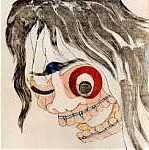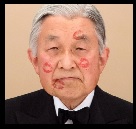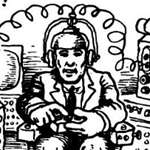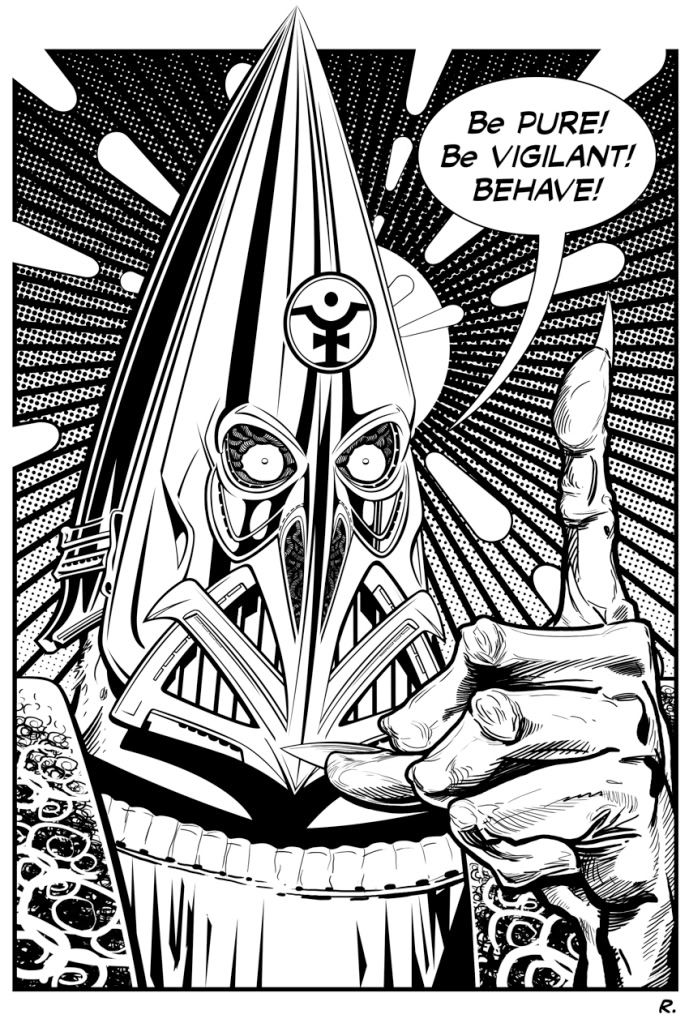| Hot Topics | |
|---|---|
Oosuna'arashi - gritty gold
17 posts
• Page 1 of 1
Oosuna'arashi - gritty gold
Sand mining: the global environmental crisis you’ve probably never heard of
From Cambodia to California, industrial-scale sand mining is causing wildlife to die, local trade to wither and bridges
to collapse. And booming urbanisation means the demand for this increasingly valuable resource is unlikely to let up
https://www.theguardian.com/cities/2017 ... ever-heard
From Cambodia to California, industrial-scale sand mining is causing wildlife to die, local trade to wither and bridges
to collapse. And booming urbanisation means the demand for this increasingly valuable resource is unlikely to let up
https://www.theguardian.com/cities/2017 ... ever-heard
•I prefer liberty with danger to peace with slavery.•
-

Mike Oxlong - Posts: 6818
- Joined: Wed Oct 20, 2004 5:47 pm
- Location: 古き良き日本
Re: Oosuna'arashi - gritty gold
Mike Oxlong wrote:Sand mining: the global environmental crisis you’ve probably never heard of
From Cambodia to California, industrial-scale sand mining is causing wildlife to die, local trade to wither and bridges
to collapse. And booming urbanisation means the demand for this increasingly valuable resource is unlikely to let up
https://www.theguardian.com/cities/2017 ... ever-heard
Interestingly, Japan is not mentioned in that article.
I guess they have enough mountains for harvesting to keep the concrete industry going for some while...
“To learn who rules over you, simply find out who you are not allowed to criticize.”
“I know not with what weapons World War III will be fought, but World War IV will be fought with sticks and stones.” ― Albert Einstein
-

Russell - Maezumo
- Posts: 8578
- Images: 1
- Joined: Fri Aug 13, 2010 11:51 pm
Re: Oosuna'arashi - gritty gold
I think the mountains are for gravel. Sand is mined from the sea and elsewhere, I guess. Didn't a chunk of concrete fall from a Shinkansen tunnel and bounce off a train maybe ten years back, due to the salt in the sand harvested from the sea corroding the rebar?
•I prefer liberty with danger to peace with slavery.•
-

Mike Oxlong - Posts: 6818
- Joined: Wed Oct 20, 2004 5:47 pm
- Location: 古き良き日本
Re: Oosuna'arashi - gritty gold
The "concrete disease" where the rusting of the rebars crack open the concrete coating don't even need this. More than few older brutalist structures are aging quite disgracefully... That would be nice to have links to post disaster reports.
(Btw... just hit the wikis on concrete pathologies and kiss you night of sleep good bye... happy I run away from that field soon enough)
(Btw... just hit the wikis on concrete pathologies and kiss you night of sleep good bye... happy I run away from that field soon enough)
-

Coligny - Posts: 21815
- Images: 10
- Joined: Sat Jan 17, 2009 8:12 pm
- Location: Mostly big mouth and bad ideas...
Re: Oosuna'arashi - gritty gold
http://www.japantimes.co.jp/opinion/201 ... kuza-laws/
http://archive.is/3XCCu
http://archive.is/3XCCu
Kodo-kai still raking in funds despite tougher yakuza laws
SENTAKU MAGAZINE
OCT 23, 2015
Between late August and early September, the Yamaguchi-gumi, Japan’s largest yakuza syndicate, suddenly split into two groups, leading people to worry that the feud might lead to violent infighting.
But a police insider has all but brushed aside such fears, pointing out that the winner in this infighting will be determined not by guns and swords but by money. And well-positioned with a lot of money in hand is the Kodo-kai, a leading group within the Yamaguchi-gumi that has controlled the overall syndicate for more than a decade.
Shinobu Tsukasa, 73, whose real name is Kenichi Shinoda, has headed the Kodo-kai since 1984, and it was his talent for accumulating huge sums of money through various types of business that enabled him to become the sixth-generation leader of the parent Yamaguchi-gumi in 2005, according to a writer who has covered yakuza affairs for many years.
A major source of income for his group was a huge public works project — construction of Chubu Centrair International Airport, which opened in 2005 on a man-made island near Nagoya.
A former officer in the Aichi Prefectural Police says the Kodo-kai raked in huge profits by controlling the rights and interests over the procurement and supply of dirt and sand used to build the offshore island. Although the police started an investigation, they failed to dig through to the heart of the matter, he says.
The total cost for building the airport came to about ¥600 billion, the majority of which went toward creating the man-made island. About ¥100 billion of that was reportedly spent on the dirt and sand.
Under close watch by the Aichi police around that time was a construction company called Samix, headquartered in Nagoya. A small firm with about 100 employees, it is believed to be under the wing of the Kodo-kai and to have controlled the rights and interests over the procurement and supply of dirt and sand for the airport project.
Samix’s sales expanded rapidly after the airport construction got under way in 2000, from around ¥5 billion per year before that to three times in 2001 and to nearly ¥20 billion in 2002.
Samix paid money gained from its business to the Kodo-kai under various pretexts, and the total amount that ended up in the yakuza group’s coffers in connection with the airport project is believed to have reached tens of billions of yen.
Although Samix’s executives were suspected of minor irregularities and indicted, it came to naught, according to a reporter at a newspaper with a nationwide circulation. How some of the money for the huge public works project was funneled to the Kodo-kai and Yamaguchi-gumi never came to light because, the reporter points out, the yakuza had moles in the Aichi Prefectural Police, as was discovered in 2011 and 2013.
Another major source of the Kodo-kai’s income lies in stevedoring and other work at the port of Nagoya, one of Japan’s largest shipping hubs, with the value of trade standing at ¥17 trillion per year, mainly thanks to export of cars manufactured by Toyota Motor Corp., which is based in Aichi Prefecture. Indeed, the Kodo-kai originated from a yakuza group called the Suzuki-gumi, which controlled stevedores at the port.
The Kodo-kai allocates loading, unloading and other harbor business at the port to several hundred stevedoring and warehousing companies in return for payoffs, according to a local newspaper reporter.
Even major contractors have to grease the palms of the Kodo-kai to hire subcontractors for construction work at the port, he says, adding virtually all of the subcontractors and sub-subcontractors have to pay off the yakuza group. This has led the aforementioned former prefectural police officer to speculate that the Kodo-kai must be earning billions of yen a year from businesses related to Nagoya port.
The “pleasure” sector of Nagoya — places offering food, drinks and sex — is likewise the Kodo-kai’s unassailable territory. Virtually all of the roughly 1,000 sex entertainment shops in the city are paying off the gangsters at an estimated average annual rate of ¥2 million, for a total of ¥2 billion. The sum rises to more than ¥10 billion a year when the income from illegal sex entertainment shops and those directly managed by the Kodo-kai are taken into account.
Thanks to these various methods of making money, the Kodo-kai as a whole collects as much as ¥100 billion a year.
The aforementioned writer with extensive experience reporting on yakuza groups says gangsters have recently started investing their earnings in stocks and venture capital — but refrain from taking part in risky speculative stock investments. They can also obtain, through various back channels, internal corporate information that can directly impact share prices, he says.
Although such acts constitute insider trading, it is practically impossible for law enforcement authorities to clamp down on them because of lenient provisions in the relevant laws.
It is reasonable to assume that a big yakuza group like the Kodo-kai moves billions of yen in the stock market per day. If it yields just 1 percent in investment profit per day, the profit would come to billions of yen per year.
Many yakuza groups are believed to be keen on investing in venture capital companies, especially those in the information technology field, with an eye to making big gains with initial public offerings.
After many prefectures and municipalities started enforcing anti-yakuza ordinances, gangs began to suffer steep earnings declines. But one major exception is the Kodo-kai, which, with its financial clout, has remained overwhelmingly powerful and active in shady investments.
A veteran reporter who has covered yakuza groups for a newspaper with a nationwide circulation says that since the anti-yakuza ordinances were instituted, it has become increasingly difficult for the gangs to continue money-making operations in the same way as their predecessors did in days gone by. As a result, he says, those incapable of finding new ways of doing business in questionable gray zones are being forced out of the scene.
There still is no way of knowing the entire financial picture of yakuza organizations in Japan. The American magazine Fortune estimated last year that the Yamaguchi-gumi’s annual earnings were about ¥9 trillion. Even if that figure is correct, the portion that comes from the old, traditional money-making methods is rapidly decreasing.
No matter how hard the police hold up the slogan of demolishing the yakuza groups, some syndicates will continue to find new ways to pursue their economic activities to ensure their survival.
It is undeniable that certain portions of the Japanese economy are operating on yakuza money.
-

TennoChinko - Maezumo
- Posts: 1340
- Joined: Mon Feb 27, 2006 9:33 am
Re: Oosuna'arashi - gritty gold
Coligny wrote:The "concrete disease" where the rusting of the rebars crack open the concrete coating don't even need this. More than few older brutalist structures are aging quite disgracefully... That would be nice to have links to post disaster reports.
(Btw... just hit the wikis on concrete pathologies and kiss you night of sleep good bye... happy I run away from that field soon enough)
my personal conspiracy theory on why the twin towers fell down is somebody mixed too much sand in the concrete and the building's frame was rusting in the salty air
not as glamorous as lizard headed aliens planted charges in the building 30 years before I admit
-

legion - Maezumo
- Posts: 2681
- Joined: Thu Dec 09, 2010 11:30 pm
- Location: Tokyo
Re: Oosuna'arashi - gritty gold
Laugh as you wish... but at least the twins were steel structures... In Paris the tallest skycrapper "Tour Montparnasse" appears to be a full on concrete nightmare.
Wiki:
Wiki:
It is said that the view from the top is the most beautiful in Paris, because it is the only place from which the tower cannot be seen.[9]
A 2008 poll of editors on Virtualtourist voted the building the second-ugliest building in the world, behind Boston City Hall in the United States.[10]
-

Coligny - Posts: 21815
- Images: 10
- Joined: Sat Jan 17, 2009 8:12 pm
- Location: Mostly big mouth and bad ideas...
Re: Oosuna'arashi - gritty gold
Cool, looks like a place Torquemada would live


-

legion - Maezumo
- Posts: 2681
- Joined: Thu Dec 09, 2010 11:30 pm
- Location: Tokyo
Re: Oosuna'arashi - gritty gold
legion wrote:Coligny wrote:The "concrete disease" where the rusting of the rebars crack open the concrete coating don't even need this. More than few older brutalist structures are aging quite disgracefully... That would be nice to have links to post disaster reports.
(Btw... just hit the wikis on concrete pathologies and kiss you night of sleep good bye... happy I run away from that field soon enough)
my personal conspiracy theory on why the twin towers fell down is somebody mixed too much sand in the concrete and the building's frame was rusting in the salty air
not as glamorous as lizard headed aliens planted charges in the building 30 years before I admit
I am not an expert in lizard-headed aliens, but how would you describe this?

“To learn who rules over you, simply find out who you are not allowed to criticize.”
“I know not with what weapons World War III will be fought, but World War IV will be fought with sticks and stones.” ― Albert Einstein
-

Russell - Maezumo
- Posts: 8578
- Images: 1
- Joined: Fri Aug 13, 2010 11:51 pm
Re: Oosuna'arashi - gritty gold
Russell wrote:I am not an expert in lizard-headed aliens, but how would you describe this?
lizard headed aliens, definitely lizard headed aliens, ask the CIA, they had the records stored in that building
-

legion - Maezumo
- Posts: 2681
- Joined: Thu Dec 09, 2010 11:30 pm
- Location: Tokyo
-

Mike Oxlong - Posts: 6818
- Joined: Wed Oct 20, 2004 5:47 pm
- Location: 古き良き日本
Re: Oosuna'arashi - gritty gold
legion wrote:Russell wrote:I am not an expert in lizard-headed aliens, but how would you describe this?
lizard headed aliens, definitely lizard headed aliens, ask the CIA, they had the records stored in that building
LOL
“To learn who rules over you, simply find out who you are not allowed to criticize.”
“I know not with what weapons World War III will be fought, but World War IV will be fought with sticks and stones.” ― Albert Einstein
-

Russell - Maezumo
- Posts: 8578
- Images: 1
- Joined: Fri Aug 13, 2010 11:51 pm
Re: Oosuna'arashi - gritty gold
To answer the D00tchbag...
1 is accident
2 is coincidence
3 is enemy action.
And it sure as fuck make a lot to have 3 building collapsing nicely in their footprint.
1 is accident
2 is coincidence
3 is enemy action.
And it sure as fuck make a lot to have 3 building collapsing nicely in their footprint.
-

Coligny - Posts: 21815
- Images: 10
- Joined: Sat Jan 17, 2009 8:12 pm
- Location: Mostly big mouth and bad ideas...
Re: Oosuna'arashi - gritty gold
Coligny wrote:To answer the D00tchbag...
1 is accident
2 is coincidence
3 is enemy action.
And it sure as fuck make a lot to have 3 building collapsing nicely in their footprint.
Only lizard-headed aliens can do that, so to say...
“To learn who rules over you, simply find out who you are not allowed to criticize.”
“I know not with what weapons World War III will be fought, but World War IV will be fought with sticks and stones.” ― Albert Einstein
-

Russell - Maezumo
- Posts: 8578
- Images: 1
- Joined: Fri Aug 13, 2010 11:51 pm
Re: Oosuna'arashi - gritty gold
Totally stealing thatColigny wrote: D00tchbag
-

Tsuru - Posts: 2408
- Joined: Tue Jan 14, 2003 9:08 am
- Location: Farcical Blingboddery
Re: Oosuna'arashi - gritty gold
Tsuru wrote:Totally stealing thatColigny wrote: D00tchbag
You can do better than that, plain man...
“To learn who rules over you, simply find out who you are not allowed to criticize.”
“I know not with what weapons World War III will be fought, but World War IV will be fought with sticks and stones.” ― Albert Einstein
-

Russell - Maezumo
- Posts: 8578
- Images: 1
- Joined: Fri Aug 13, 2010 11:51 pm
Re: Oosuna'arashi - gritty gold
No matter how hard the police hold up the slogan of demolishing the yakuza groups, some syndicates will continue to find new ways to pursue their economic activities to ensure their survival.
It is undeniable that certain portions of the Japanese economy are operating on yakuza money.
Ganbare, keeping the wa, when will they get their own TV documentary showing the real "samurai" at work?
-

matsuki - Posts: 16041
- Joined: Wed Feb 02, 2011 4:29 pm
- Location: All Aisu deserves a good bukkake
17 posts
• Page 1 of 1
Who is online
Users browsing this forum: No registered users and 0 guests

